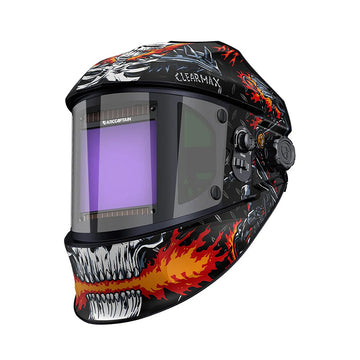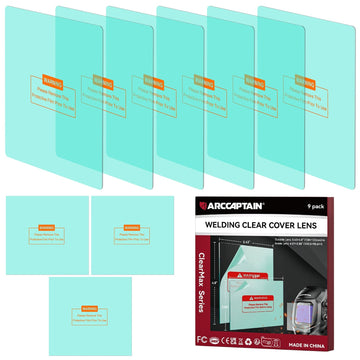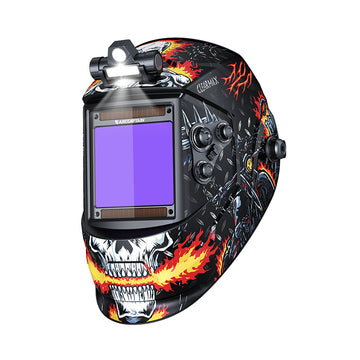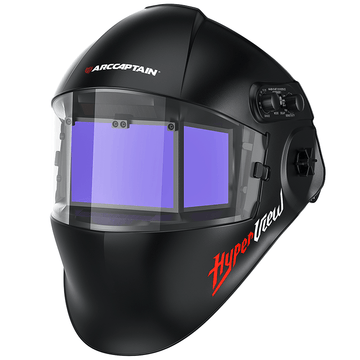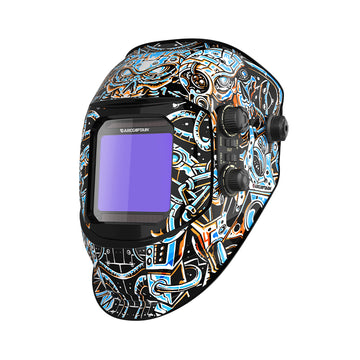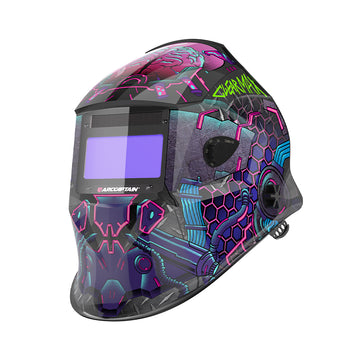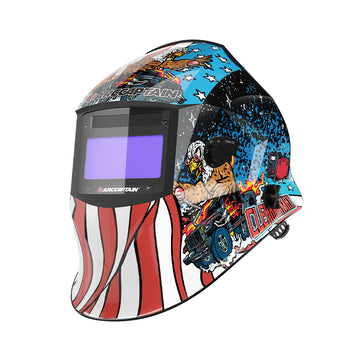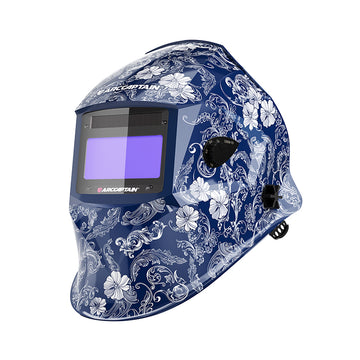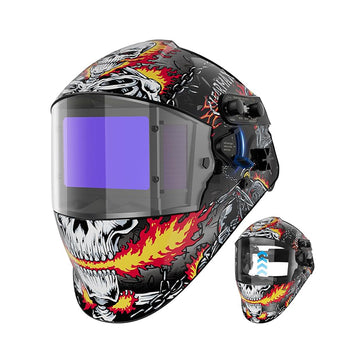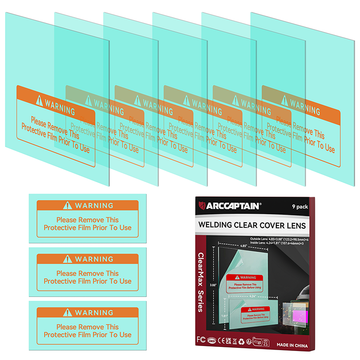All Welding Helmet
- Características
- Más vendidos
- Alfabéticamente, A-Z
- Alfabéticamente, Z-A
- Precio, menor a mayor
- Precio, mayor a menor
- Fecha: antiguo(a) a reciente
- Fecha: reciente a antiguo(a)
Our welding helmets are built for serious work and designed with comfort in mind. Every model meets ANSI Z87.1 and CSA Z94.3 safety standards, giving you dependable protection for everything from fine TIG work to heavy-duty MIG jobs. Choose the right fit for your style, budget, and workflow — all with crystal-clear optics and all-day comfort.
Choosing the Right Welding Helmet
Finding the right helmet comes down to safety, comfort, and the kind of work you do.
-
Auto-Darkening or Passive
Auto-darkening helmets adjust instantly when the arc strikes, making them great for multi-process jobs. Passive helmets are lighter, simpler, and perfect for repetitive work at a set amperage. -
Viewing Area
Larger lenses give you more visibility and make it easier to track your weld in tight spots. -
Reaction Speed & Sensors
Multiple sensors and fast switching protect your eyes from sudden flashes and reduce fatigue. -
Comfort & Adjustability
A helmet that fits well and feels balanced will save your neck and shoulders on long days. -
Power Source
Many welders prefer dual power (solar with backup battery) for reliability without frequent battery swaps. -
Safety Standards
Always make sure your helmet meets ANSI Z87.1 and CSA Z94.3. These certifications mean your eyes and face are getting the protection they need.
FAQ - Welding Helmet
What is the best welding helmet brand?
ArcCaptain is a top choice among welders for its blend of safety, comfort, and innovation. Their helmets meet ANSI Z87.1 and CSA Z94.3 standards, offer wide viewing areas, quick reaction times, and durable construction — all at competitive prices. Whether you’re a pro or a beginner, ArcCaptain helmets deliver consistent performance.
Do cheap welding helmets work?
Some budget helmets can work well if they meet proper safety standards like ANSI Z87.1. However, low-cost models may compromise on reaction speed, comfort, and durability. Investing in a reliable brand ensures better eye protection, longer-lasting equipment, and a more comfortable experience during long welding sessions.
Is shade 10 enough for welding?
Shade 10 is suitable for certain lower-amperage tasks like some MIG and stick welding. However, for higher-amp work or prolonged exposure, a darker shade (11–13) offers better protection. Always check a shade chart to match the filter to your welding process and amperage range.
How to choose a welding helmet for beginners?
Beginners should look for an auto-darkening helmet with an adjustable shade range (DIN 9–13), comfortable headgear, and a lightweight shell. A larger viewing area helps with accuracy, while multiple sensors improve reliability. Safety certification is essential — never compromise on standards when starting out.
What are the three types of welding helmets?
The main types are auto-darkening helmets, passive (fixed shade) helmets, and pancake helmets. Auto-darkening models offer versatility for various welding processes, passive helmets are lightweight and simple, and pancake helmets are favored for outdoor pipeline welding due to their glare-blocking design.
What does DIN 9–13 mean on a welding helmet?
DIN 9–13 refers to the helmet’s adjustable shade range. Lower numbers like DIN 9 are lighter, allowing more light through for lower-amperage work. Higher numbers like DIN 13 are darker, protecting against intense arcs in high-amp welding. The range lets you fine-tune visibility and safety for different tasks.
Why Buy From Us?
-
30-day returns
-
Manufacturer-backed warranties
-
Secure checkout with trusted payment options
-
All helmets meet ANSI Z87.1 & CSA Z94.3 safety standards



